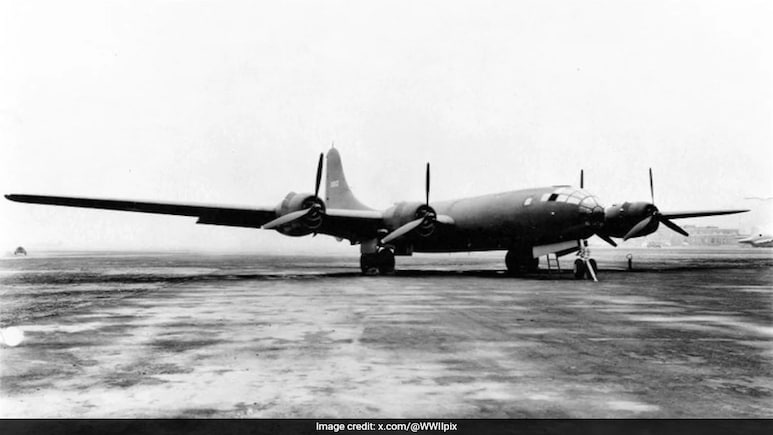
- The Boeing B-29 Superfortress was designed to fly 3,200 km and reach 30,000 ft altitude
- It was the most expensive WWII bomber, costing more than the atomic bombs on Japan
- The B-29 featured pressurised cabins, remote gun turrets, radar targeting, and tricycle gear
Nearly two years before the attack on Pearl Harbour brought the United States into the Second World War, the US Army Air Corps asked American aircraft manufacturers to design a bomber that could fly 3,200 km and reach unprecedented altitudes. Boeing eventually won the competition with what would be called the Boeing B-29 Superfortress or just B-29.
Though the project faced delays, the Superfortress entered service in 1944. By then, it had become the largest and most complex aviation project in US history, according to the BBC, costing the equivalent of more than $55 billion (Rs 4.85 lakh crore) in today's money.
During World War II, it was the most sophisticated bomber and also the most expensive weapon, costing more to design and build than the atomic bombs it dropped on Japan. It was a machine that reshaped warfare and paved the way for the modern airliner, according to a BBC report.
Earlier bombers flew above 20,000 ft (6 km), but the B-29 was designed to cruise at 30,000 ft. "You have to be on oxygen the whole time," said Hattie Hearn, curator at the American Air Museum in Duxford, in an interview with the BBC. Without it, she said, airmen could lose consciousness "within two minutes."
The solution was pressurisation. For the first time, a bomber had a cabin that mimicked ground-level conditions, allowing crews to fly without oxygen masks or bulky heated suits. Jeremy Kinney of the Smithsonian National Air and Space Museum said, "Allowing a crew to operate in light flight suits, because the compartments are heated, allows them to take these long missions in a much more hospitable way."
The B-29 also introduced remote-controlled gun turrets, radar-assisted targeting and tricycle landing gear, all innovations later adopted by civilian aircraft. Yet it was plagued by setbacks, particularly engine fires from its R-3350 Duplex Cyclone. In one incident in 1943, Boeing's chief test pilot, Edmund T Allen and his crew were killed when a prototype crashed near Seattle.
Mass production was another issue. Factories in Kansas struggled with the complexity of the aircraft. According to the BBC, only a fraction of the first planes could even fly, prompting General Hap Arnold to launch a programme to rebuild the fleet before deployment. Deployed exclusively in the Pacific theatre, the B-29 launched incendiary bombs on Japanese cities in 1945 that killed thousands.
After the war, the B-29 served in Korea and was adapted for new roles, including air-to-air refuelling.
For Boeing, the lessons of the B-29 transformed civil aviation. Its pressurisation system, long-range capability and all-aluminium design were the foundation of the Boeing 377 Stratocruiser, an airliner capable of carrying 100 passengers across the Atlantic.
The B-29 also helped shape infrastructure. Its sheer size required runways up to a mile long, laying the groundwork for the global airport network of the post-war era.
Only 22 of the almost 4,000 B-29s that were built are still in use today. Of those, just two are flying.
Track Latest News Live on NDTV.com and get news updates from India and around the world

